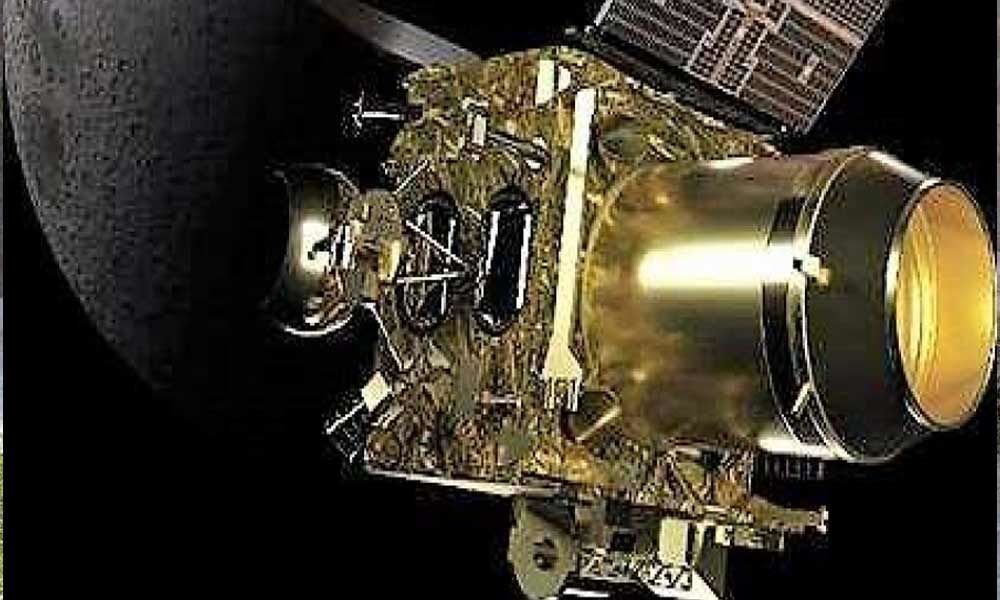Live
- They always want me to win, and now I feel lucky to have been offered a story like ‘Zebra’: Satyadev Kancharana
- ‘Democracy first, humanity first’: PM Modi in Guyana's parliament on two countries' similarities
- PKL Season 11: Telugu Titans register third straight win to top standings
- Is Pollution Contributing to Your COPD?
- NASA Unveils Underwater Robots for Exploring Jupiter's Moons
- Additional Central forces arrive in violence-hit Manipur
- AR Rahman and Saira Banu’s Divorce: Legal Insights into Common Issues in Bollywood Marriages
- 82.7 pc work completed in HPCL Rajasthan Refinery area: official
- Curfew relaxation extended in 5 Manipur districts on Friday
- Tab scam prompts Bengal govt to adopt caution over fund disbursement
Just In
Chandrayaan-2 Ready to Land on the Moon: Know What Next


This will mark a significant milestone for the mission and take us another step closer to landing our lander (Vikram) on Moon.
Chandrayaan-2 has completed most of its leg work and is all set to enter lunar orbit on Tuesday, leaving very few operations before attempting to land a probe on Moon in the early hours of September 7.
K Sivan, Chairman, Indian Space Research Organisation (ISRO), said: "This will mark a major milestone for the mission and take us another step closer to landing our lander (Vikram) on Moon. All the preparations are as per schedule, and the spacecraft is healthy and working as per our plan."
Isro will be first rotating the spacecraft by 180 degrees before igniting the onboard propulsion systems, to achieve the lunar orbit insertion.
"The satellite will be moving in one direction with a certain velocity. To allow it to be absorbed by Moon's gravitational force, we need to reduce its speed. And, to achieve that the thrusters need to be retro fired (in the opposite direction), which is why we have to rotate the satellite," a scientist monitoring Chandrayaan-2 from the Isro Telemetry, Tracking and Command (Istrac) centre in Bengaluru.
Once Isro completes the lunar orbit insertion the space agency will perform four more manoeuvres on August 21, 28, 30 and September 1, take the spacecraft to lower orbits and finally make it settle in a 100kmX100km orbit.
On September 1, after the last manoeuvres, Chandrayaan-2 is likely to be in a 114kmX128km orbit. Once it enters this orbit, Vikram, which is carrying the rover Pragyan which is inside it, will get separated from the orbiter four days before the landing date.
"The final descent of the lander will be 15 terrifying minutes for us, as it is something we've never tried before. It is one of the most complex operations we've ever handled," Sivan said.
15 Distressing Minutes
Vikram will reach an orbit that is 30kmX100km orbit around Moon, after separating from the orbiter.
From a 30km height, Vikram will start the descent, and 10.3 minutes later it would have dropped to reach a height of 7.4km from the lunar surface.
In the next 38 seconds, it will reduce the speed further and reach a height of 5km from the lunar surface, and the next 89 seconds will see Vikram minimise altitude to 400m from the lunar surface.
At 400m height, Vikram will hover for about 12 seconds to collect some data from the lunar surface. It will further reduce its altitude in the next 66 seconds, to reach a height of 100m from the lunar surface, after the hovering.
When it is at 100m height, Vikram will hover for about 25 seconds where it will decide if it must land on the first preferred site or the second one. Its onboard instruments will guide Vikram.
"If it can land on the first site, Vikram will, in the next 65 seconds, reach a height of 10m from the lunar surface directly, significantly reducing its velocity too; it will be a vertical descent," a scientist who was part of planning the landing profile said, adding: "In case it has to pick the second landing site, it will use 40 seconds to first descend to a height of 60m, then, further drop down to 10m in the next 25 seconds."
It will take Vikram 13 seconds to touchdown on Moon, from 10m height. "During all this time, all five engines of Vikram will be running. As per initial plans they were to be turned off at the height of 10m, but now we've decided that the engines run until the touch-sensors tell them to shut off once all four legs of the lander have touched the surface," explained another scientist.
In some 15 minutes, Vikram will share the first pictures after the touchdown and Pragyan will crawl out of the lander after four hours.

© 2024 Hyderabad Media House Limited/The Hans India. All rights reserved. Powered by hocalwire.com






